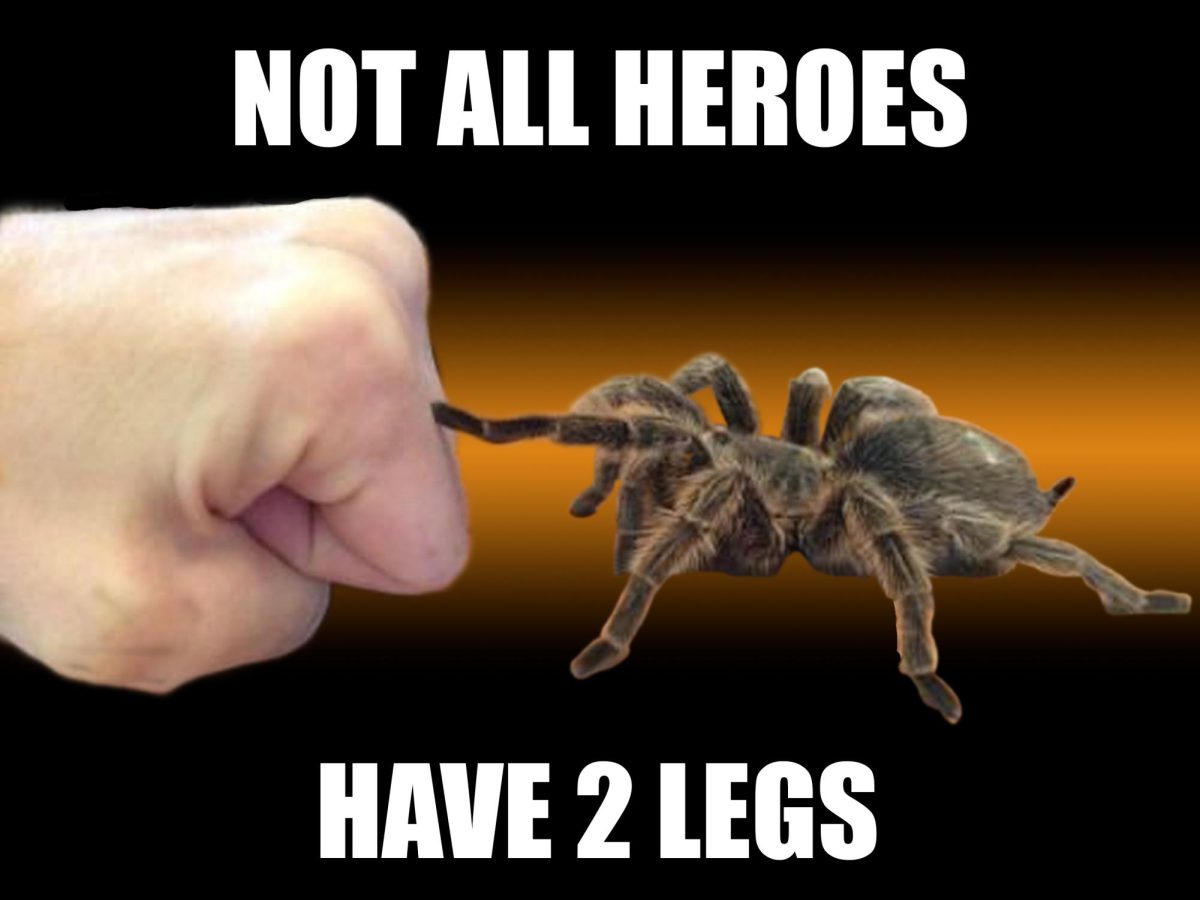With Halloween right behind us, there’s everything from plastic to rubber spiders being tossed away and remembered only by their unsettling appearance and overdramatized bites. Despite their notorious reputation as murderous mutant-bugs, the Earth benefits more when spiders are roaming in the wild and not in between the gaps on the sole of your shoe.
Spiders are important to both the well-being of the planet, and the well-being of humans, despite their commonly venomous and vile depictions.
You may argue that even though spiders are important for the environment and for studying, it’s still reasonable to kill them on-sight because of their potential to seriously harm humans. However, out of the 43,000 species of spiders, only around 0.5% of them are capable of causing harm after biting a human, and only 30 of the species (<0.1%) are capable of killing someone.
How Are Spiders Helpful?
Killing a spider only hurts the environment as they’re apex predators that we rely on for natural pest control. Spiders kill 400-800 million tons of prey every year, which is even more impressive when you consider the fact that humans eat only about 400 million tons of meat and fish every year. Since the average bug weighs about 3 milligrams, that means that spiders prey on about 120.9 quadrillion bugs annually (and that’s on the low end!). Spiders prey on a lot of annoying pests like: mosquitoes, flies, moths, cockroaches, earwigs, beetles, etc.
Spiders most commonly catch their prey with their beautifully-spun webs, which are three times tougher than Kevlar of the same thickness, and 130% stretchier! The incredibly strong properties of spider silk come from the way it’s weaved; spider silk is masterfully folded by the spider’s hind legs. This process has to be incredibly fast, as spider silk is secreted as a liquid protein that quickly crystallizes when exposed to air.
The strength of spider silk has a large variety of industrial applications, such as its ability to be spun into polymeric materials capable of carrying out the functions of materials as essential and common as plastic far quicker and more efficiently. Spider silk is also very biodegradable, since it’s 98% water!
Spider silk holds a lot of promise for the future of buildings, but it also has the potential to solve some medical issues as well. Spider silk can be used in the medical field by being able to potentially patch wounds, promote targeted healing, and could even be used to improve chemotherapy. Spider silk can be used to help deliver drugs into the body, and this method has been shown to double the effectiveness of doxorubicin (A common cancer-killing agent).
Besides spider silk, spiders produce something else that we can harvest for our own benefit, their venom! Spider venom could be studied and chemically modified in order to cure diseases and disorders that currently have no (or little) cure, such as: epilepsy, erectile dysfunction, and, again, cancer. Spider venom could be modified to target specific channels in the brain, restoring neurons and eliminating the risk of seizures.
Now that you know many of the ways that spiders are important to humans, and how spiders are very rarely dangerous to humans, there’s a better way to deal with them when you see one in your home. Spiders are undeniably scary to a lot of people, but it’s no reason to kill such an important animal!
If you’re willing to give peace a chance and try to safely remove a spider from your home without smearing it on your wall or ceiling, just follow these simple steps:
How to safely remove a spider from your house
Materials required:
- A piece of paper
- The thicker the better; I recommend cardstock
- A jar or cup
- You need to check to make sure that your paper can completely cover the top of the container!
What to do:
- Once you have your container and paper in hand, approach the spider slowly while you try to back it into a corner to make it harder for it to run away.
- When the spider is cornered, you can quickly put the container over it to keep it stuck to the wall, then slide your cardstock underneath it to make a temporary floor for the spider.
- It’s important to have strong paper for this part because the thinner your paper is, the less weight it’ll be able to hold and you’ll run the risk of the spider getting out while you’re holding it!
- Once you have a floor under the spider, you can flip the container top-up so that the cardstock ceiling becomes a cover.
- Once you’ve captured the spider, you can dump it out wherever you’re comfortable with, like outside or in your friend’s house.
Congratulations! You saved a life!
Spiders do too much for us to deserve their poor reputation. Spiders prevent common pests from getting too abundant, and they offer a lot of unique characteristics that we can study to better our medical and constructional technology. It’s a common belief that spiders symbolize good luck and money, and killing one could cause bad luck or a financial loss. Even though it’s just superstition, maybe it’ll make you think twice before killing the next spider you see living in your home. There’s a popular saying that originated in Ireland and Scotland in 1867 that goes:
“If you wish to live and thrive, let a spider run alive.”







